Wear OS has experienced a resurgence following Google’s collaboration with Samsung. Both tech giants have their own smartwatches that command a considerable portion of the Wear OS marketplace. While this is a positive development for consumers, it has also led to confusion regarding which platform to select. To assist you in making a decision, I’ve compiled this comparison of the Galaxy Watch 7 and Pixel Watch 2, where I will discuss the strengths, weaknesses, and my overall preference for each smartwatch.
Galaxy Watch 7 vs Pixel Watch 2: Specifications
Before delving into the finer points, let’s review the specifications of these two smartwatches.
| Specification | Pixel Watch 2 | Galaxy Watch 7 |
|---|---|---|
| Dimensions | 41 x 41 x 12.3 mm (41 mm) | 40.4 x 40.4 x 9.7 mm (40mm), 44.4 x 44.4 x 9.7mm (44mm) |
| Display | 384 x 384 pixels, 320 ppi, 1.2-inch AMOLED with Corning Gorilla Glass 5 | 40mm: 432 x 432 pixels, 1.31-inch; 44mm: 480 x 480 pixels, 1.47-inch AMOLED displays with Sapphire Crystal |
| Battery | 306 mAh | 40mm: 300 mAh; 44mm: 425 mAh |
| Processor | Snapdragon W5 Gen 1 (4 nm) | Exynos W1000 (3 nm) |
| Build | Stainless Steel | Aluminum Frame |
| Storage and RAM | 16GB eMMC and 2GB | 32GB eMMC and 2GB |
| Software | Wear OS 4.0 (upgradeable to Wear OS 5) | One UI Watch 6 based on Wear OS 5.0 |
| Sensors | Improved four-band Heart Rate sensor, Skin Temperature, Altimeter, Compass, Accelerometer, SpO2 | Fall Detection, Body Composition Analysis, ECG, Blood Pressure Monitoring, advanced fitness tracking |
| Noteworthy Features | Stress Management, Fall Detection, Emergency SOS, Heart Zone Training, Safety Features, six months of free Fitbit Premium | Samsung BioActive Sensor, Blood Oxygen Sensor, Optical Heart Rate Sensor, Skin Temperature |
| Colors | Polished Silver/Bay, Matte Black/Obsidian, Champagne Gold/Hazel, Polished Silver/Porcelain | Cream, Silver, Green |
Galaxy Watch 7 vs Pixel Watch 2: Design and Comfort
Pixel smartphones are distinctively designed, and Google extends that approach to its smartwatches. The design of the Pixel Watch 2 distinctly represents the Pixel brand with its pebble-like appearance, making it stand out among other Wear OS devices.
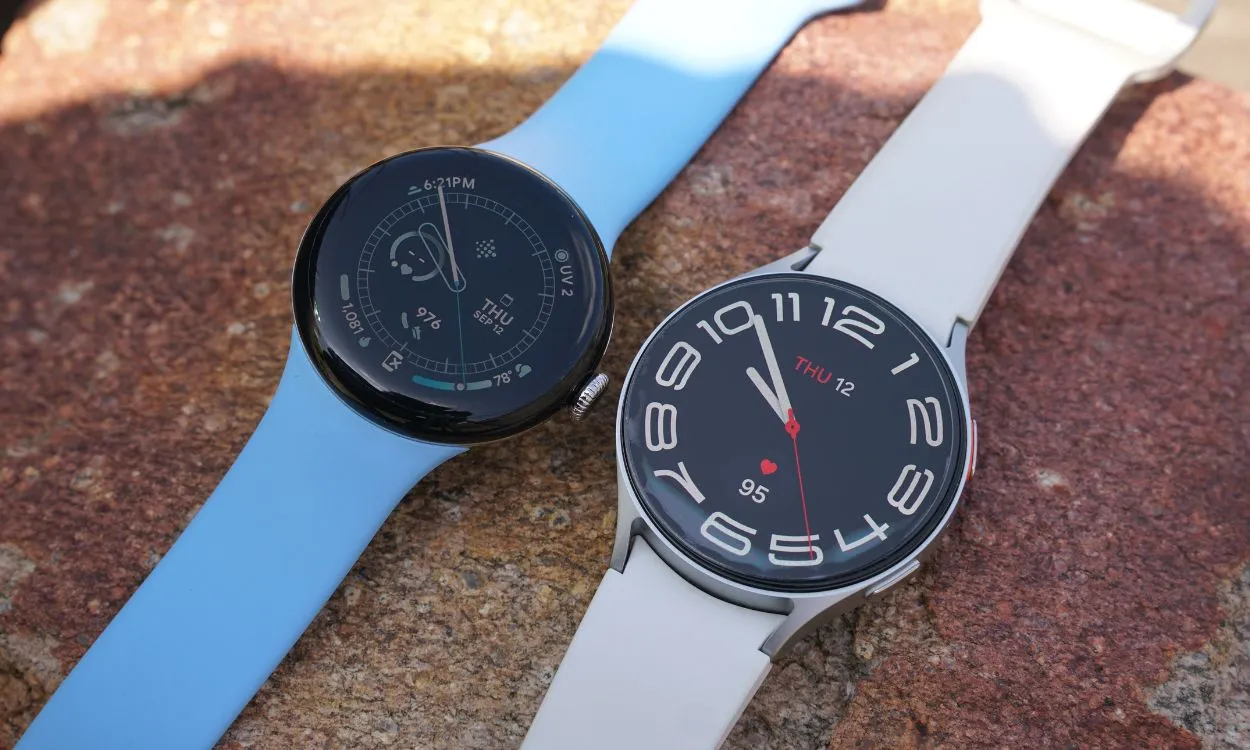
The Galaxy Watch 7, on the other hand, retains design traits from its predecessors and even from the Watch 4. While it is unmistakably a Samsung device, it lacks the unique identity of the Pixel Watch 2. Google has addressed one of my significant concerns from the Pixel Watch 3 by introducing a larger 45 mm variant and slimmer bezels on both the 41 mm and 45 mm versions.
When switching between these two watches, the Galaxy Watch is more noticeable than the Pixel Watch. The latter is lighter (around 2 grams) and has a smaller profile, making it more comfortable to wear. The 45 mm Watch 3, however, is bulkier (45x45x 12.3 mm).
One of the aspects I appreciate about the Pixel Watch 2 design is the rotatable crown. Transitioning to the Galaxy Watch 7, I genuinely missed the functionality of the rotatable crown; while the Watch 7 incorporates a touch bezel, it doesn’t compare to having a physical crown.
In summary, I prefer the design of the Pixel Watch 2 over the Galaxy Watch 7, as it offers a fresh aesthetic and slightly better comfort.
Winner: Pixel Watch 2
Galaxy Watch 7 vs Pixel Watch 2: Fitness and Health
The Galaxy Watch 7 is equipped with a BioActive sensor, which combines optical and electric heart rate sensing capabilities. Additionally, it features Bioelectrical Impedance Analysis, allowing you to assess body composition—capabilities that the Pixel Watch 2 lacks. Furthermore, the Pixel Watch does not offer Sleep Apnea or Snoring Detection, both of which are available on the Galaxy Watch. Both devices do support Blood Oxygen tracking.
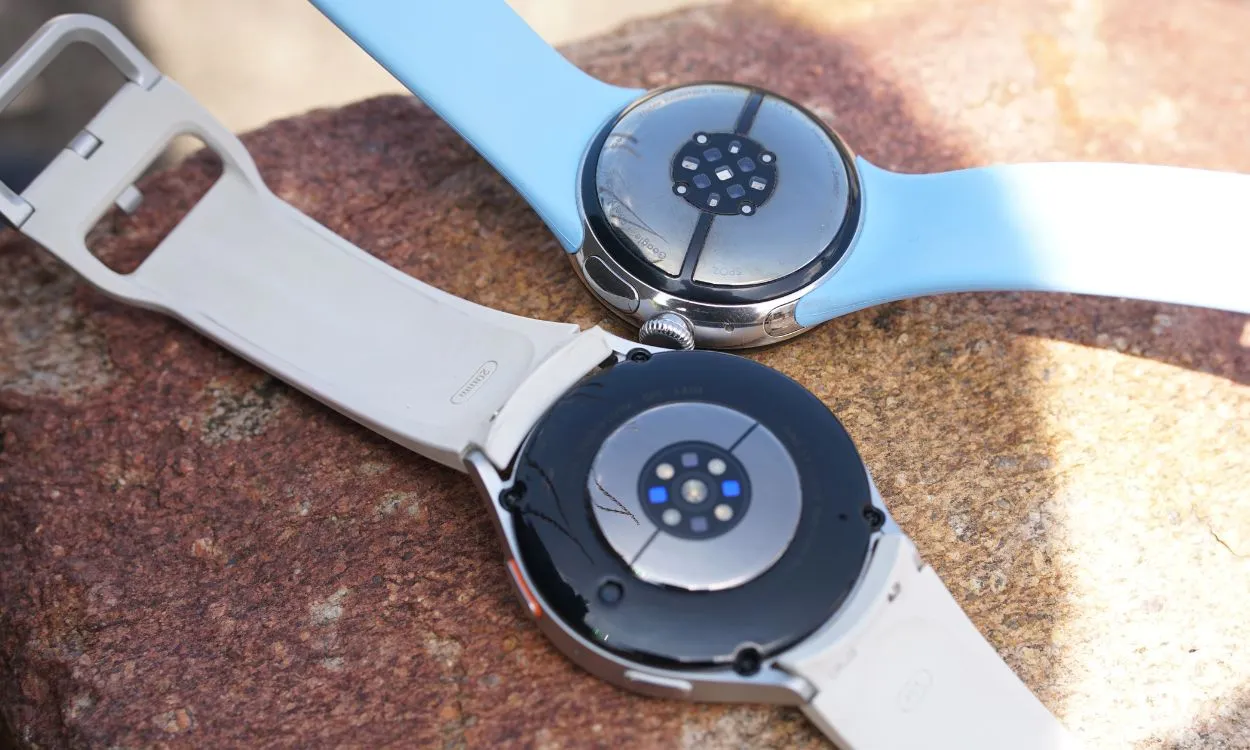
One of my main frustrations with the Pixel Watch 2 and the Fitbit app is the features that are restricted by the Fitbit subscription. I highlighted these limitations in my list of 5 reasons to consider alternatives to the Pixel Watch. Features like readiness score and advanced sleep metrics are available for free on Samsung Health but not on Fitbit. The situation may differ for the Pixel Watch 3, but it’s unclear if Google plans to update the Watch 2 in this regard.
I found the health tracking on both devices to be accurate. However, Samsung Health offers a significantly more comprehensive view of health metrics than Fitbit—ironic, considering Fitbit is a brand centered around fitness tracking. While I could discuss the specific metrics provided by each platform, the bottom line is that Samsung Health offers superior features at present.
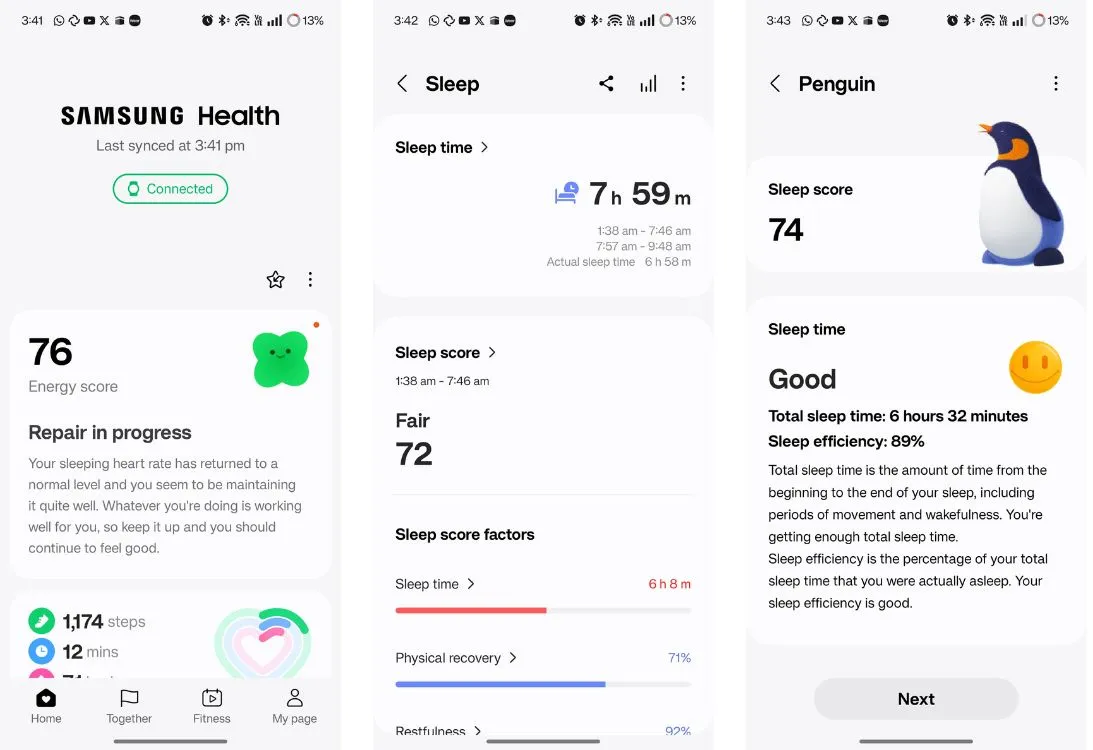
The Steps, Sleep, SpO2, and Skin Temperature metrics on both are comparable, with slight variations. However, I’ve noted the Galaxy Watch occasionally counts false steps and undervalues heart rates (some as low as 38 bpm!). The Pixel Watch 2 tends to provide more accurate tracking for both steps and heart rate.
Another reason to consider the Galaxy Watch is that Samsung Health treats your health data with more personalization, offering reminders and notifications for metrics such as heart rate, sleep, and steps.
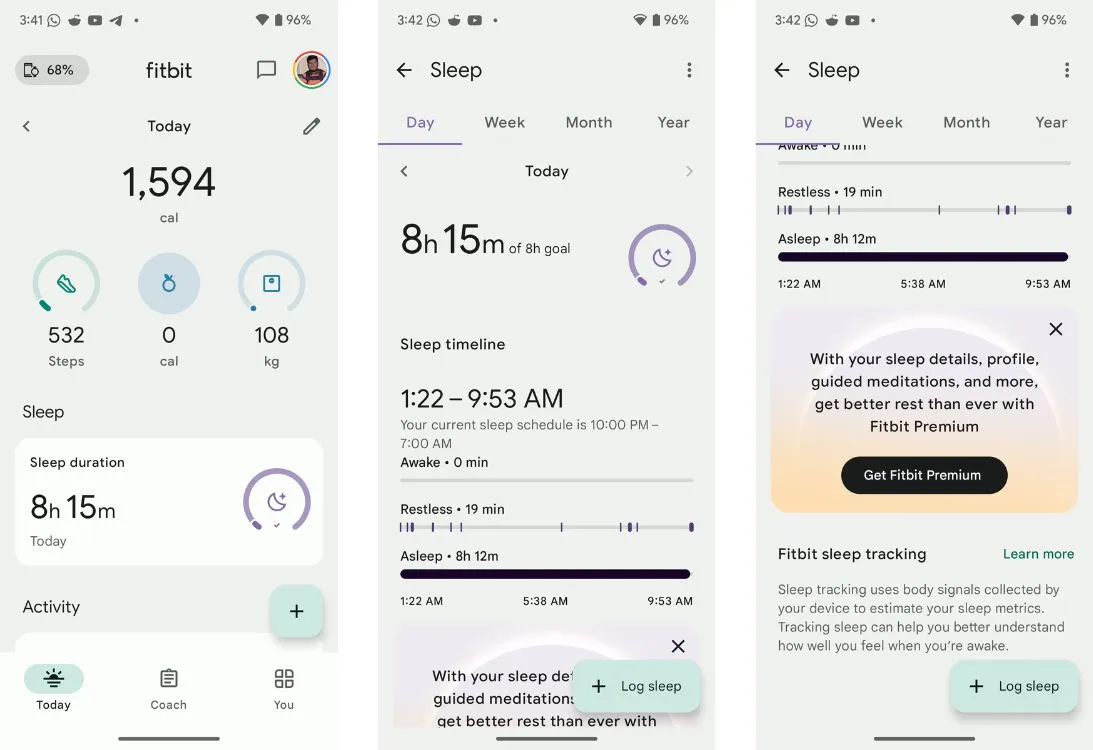
While the Pixel Watch 2 does remind you to get up and move, I found during my usage that it lacks the personal touch in tracking health metrics that Samsung provides. Samsung Health continues to improve, notably with recent AI enhancements to the app.
Winner: Galaxy Watch 7
Software and Updates
First off, the Galaxy Watch 7 is already running on Wear OS 5-based One UI Watch 6. In contrast, the Pixel Watch 2, despite being Google’s own product, is still functioning on Wear OS 4 but is expected to transition to the next version by the end of the year. This highlights a clear difference in update readiness.
Samsung also leads in software longevity, as it has promised 4 years of software support for the Galaxy Watch 7, extending to 2028. In comparison, Google provides only 3 years of major updates, meaning the Pixel Watch 2 will receive updates until 2026.
Your choice of device based on software accessibility may depend on your current ecosystem. Both Samsung and Google impose restrictions on certain features unless you use a Samsung or Android smartphone with the corresponding smartwatch. Samsung typically limits health tracking features while Google restricts software functionalities.

Although there are methods to unlock specific health features regardless of having a non-Samsung phone, features like DND and Bedtime Sync are exclusive to Samsung smartphones for the Galaxy Watch and to Pixel smartphones for the Pixel Watch. Additionally, the Watch Unlock feature is only compatible with the Pixel Watch.
In terms of user interface, both have their advantages. However, I find One UI Watch to be slightly more appealing than the Pixel UI. Don’t misunderstand me; the Pixel UI on the Pixel Watch 2 is quite fluid, but One UI provides more customization options that cater to my preferences. Features like folders or the ability to edit Quick Settings tiles are a plus, and I greatly appreciate the added flexibility.
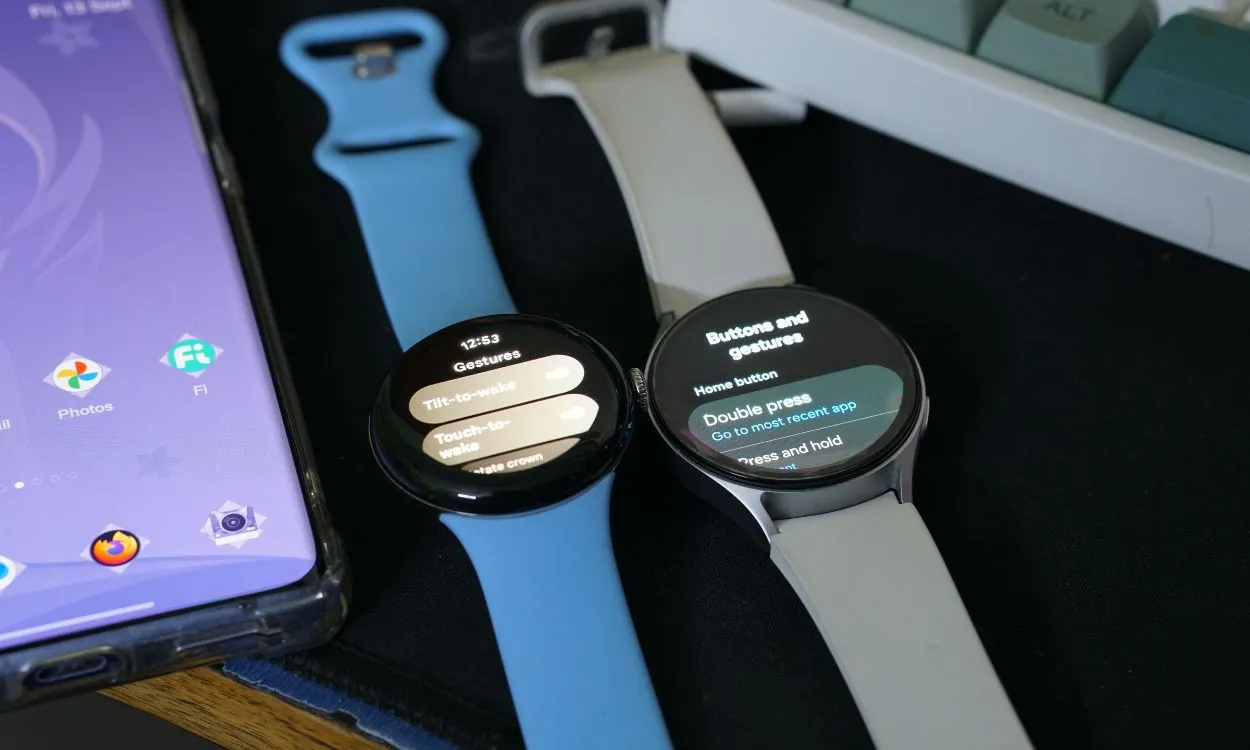
Furthermore, the Galaxy Watch has double-tap gestures that make it easy to answer/dismiss calls and launch applications. The Pixel Watch lacks such gesture support, which, while not a dealbreaker, can be inconvenient when needing to check my watch while busy or riding a motorcycle. However, I’ve encountered tilt-to-wake sensitivity issues on both devices; the Galaxy Watch tends to be less sensitive, while the Pixel is overly sensitive.
As for contactless payments, the Pixel Watch 2 is limited in many countries. Although Google Wallet has rolled out in some regions, it doesn’t currently support NFC card storage or payments. In India, Google Pay handles contactless payments, but there’s no dedicated Google Pay app for Wear OS, giving Samsung an advantage with Samsung Pay, which is functional in India on both Samsung and non-Samsung devices.
Winner: Galaxy Watch 7
Galaxy Watch 7 vs Pixel Watch 2: Battery
Neither device excels in battery life, with both capable of lasting approximately 36 hours under normal usage. On occasion, the Galaxy Watch 7 has lasted nearly 40 hours, partly due to its larger battery capacity, leaving room for improved sleep standby optimization.
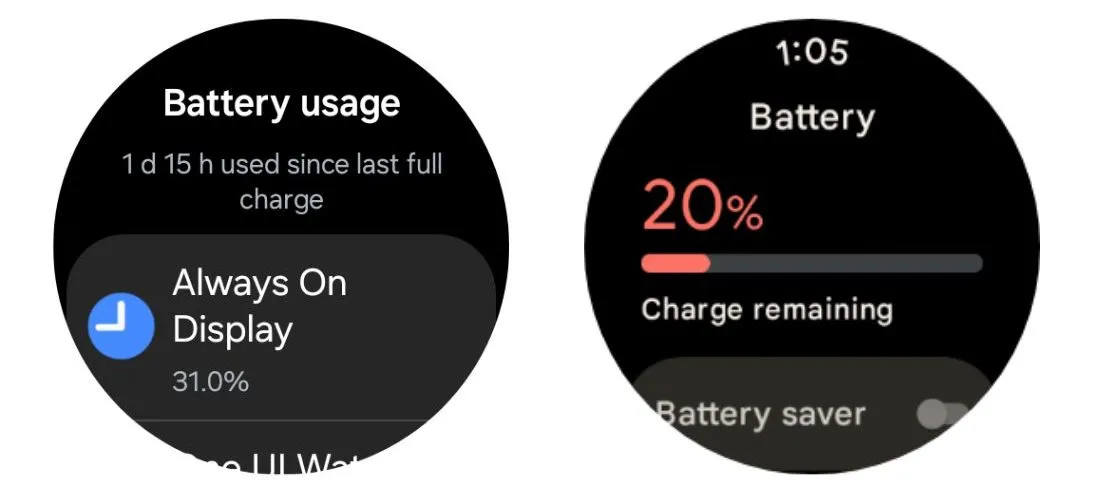
Despite the Pixel Watch having a significantly smaller battery (306 mAh compared to 425 mAh) and using a 4 nm SoC as opposed to the 3 nm in the Galaxy Watch 7, it excels in sleep standby optimization. The Galaxy Watch 7 typically loses around 15-18% battery overnight, while the Pixel Watch only uses about 5-8%. The optimization of Wear OS is commendable on the Pixel Watch.
Winner: None
Galaxy Watch 7 vs Pixel Watch 2: Verdict
Overall, both the Pixel Watch 2 and Galaxy Watch 7 are outstanding smartwatches, yet the Galaxy Watch 7 holds a slight edge. Samsung Health provides a more extensive and free experience, whereas Fitbit has fewer features and places some behind a paywall. While the Pixel Watch offers slightly better tracking accuracy, Samsung Health compensates with more robust features.
From a hardware standpoint, the Galaxy Watch 7 is equipped with a BioActive sensor incorporating BIA and enabling Sleep Apnea and Snoring detection. It’s also marginally more rugged than the Pixel Watch 2, making it arguably more repairable. Both devices have comparable battery life with the Galaxy Watch 7 lasting a few hours longer.
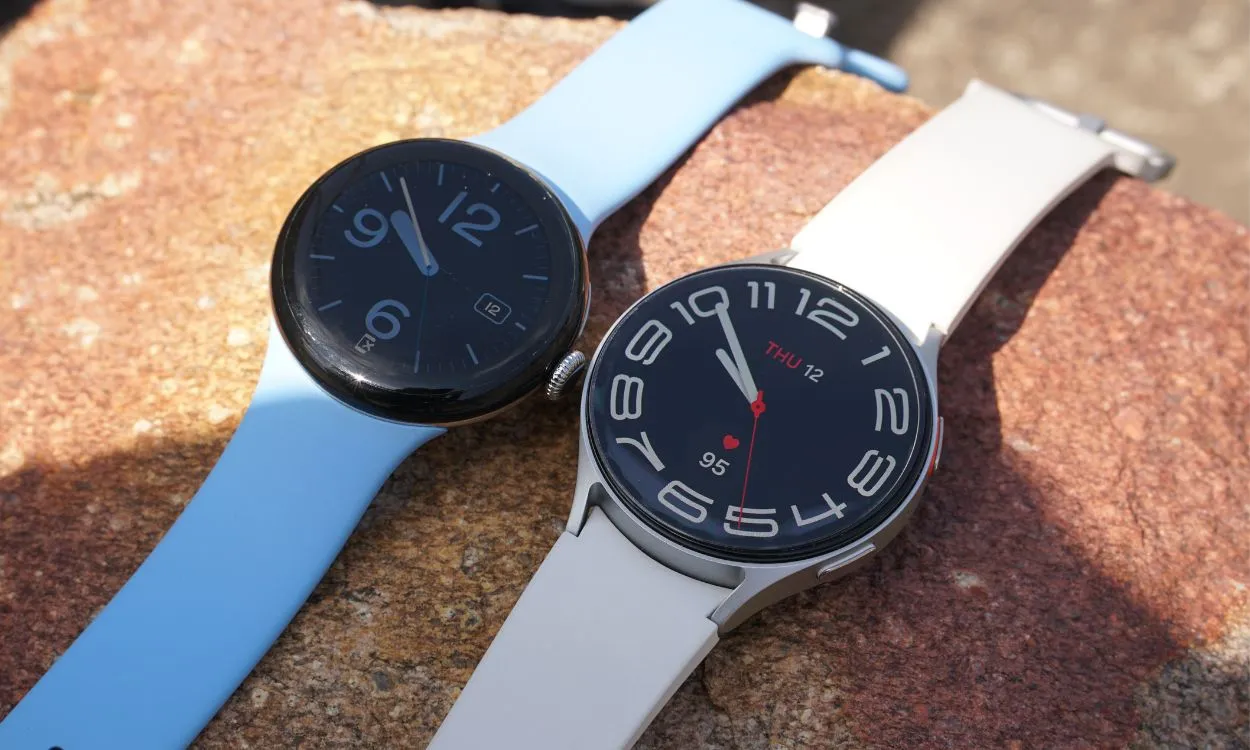
Ultimately, the Pixel Watch 2 imposes significant feature restrictions, while the Galaxy Watch also limits certain functions to Galaxy smartphones but offers solutions to access restricted health features on non-Samsung devices—something the Pixel Watch does not support.
The decisive factor in this comparison is software support; the Galaxy Watch will continue receiving updates until 2028, whereas the Pixel Watch only has two years of support remaining. While I recommend selecting a smartwatch that aligns with your ecosystem, the Galaxy Watch 7 presents a superior overall package.




Leave a Reply